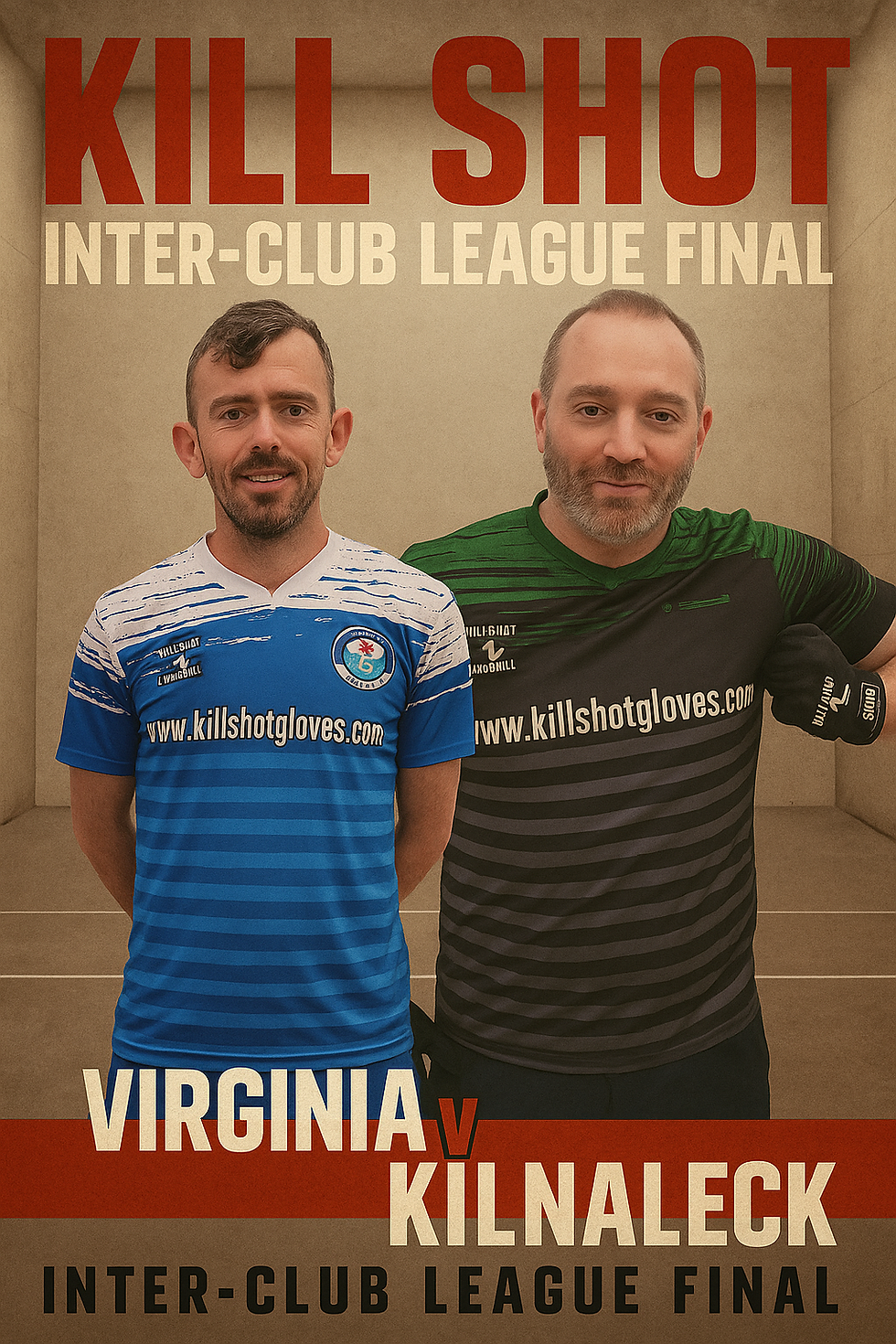The NASA astronauts 'obsessed' with handball
- killshotgloves

- Nov 16, 2022
- 4 min read

It was Friday, May 5, 1962 and, at Cape Canaveral, the tension was almost unbearable. The United States were preparing to send a man, Alan Shepard, into orbit for the first time.
While Project Mercury had been building towards this moment for three years, nothing was guaranteed. Officials close to President John F Kennedy were worried about the possibility of a disastrous outcome in front of the watching media from all over the world; the stakes could not have been higher.
Inclement weather earlier and computer glitches had forced postponements but lift-off was finally confirmed. And then, eventually, the door of the capsule closed and Shepard was left alone in the Freedom 7, where he made his way to the instrument panel.
And then he saw it, a little handmade sign which had pasted there by his back-up pilot, a man named John Glenn. The sign was a joke, something which the official Nasa history would record “harkened back to their training days”. It read, simply, “no handball playing in this area” (below). Shepard smiled and tore the sign off.

It may sound surreal to say there was a link between the traditional Irish sport of handball and the space race but there was – and it was more than just a passing one. Many astronauts were obsessed with the game and in what was a macho culture, the court became a battleground.
Handball had been brought to the United States by 19th century Irish emigrants and in the late 1950s and 1960s, it was enjoying its golden era, with an estimated five million players across the country. Firehouses and police stations traditionally housed handball facilities, as did military bases, which is where most would-be astronauts picked it up.
The earliest group, the Mercury Seven, were military test pilots who were brought together for intensive training in all aspects of their new roles.
“The men were expected to keep themselves in top physical shape but were not told how to do it,” wrote James Donovan in ‘Shoot For The Moon”, the definitive account of the space race and the Apollo 11 voyage.
“Wally Schirra and Gus Grissom played a lot of handball and the others joined in, with Alan Shepard becoming the best player. A quick, strenuous game of handball soon became the favourite workout of the astronaut corps.”
In time, handball became compulsory, with the authorities stating in a press release that “it enables the astronaut to reach an all-round state of fitness which would be impossible to achieve in any other game requiring such demands on the human body.” It was also felt that the movement around the court during rallies and the constant shifting of body position in some way could help to mirror the weightlessness of zero-gravity conditions.
Among the Mercury Seven, though, handball was just another means of vying for the position of top dog.
“The boys liked to play handball but they turned it into an epic battle,” wrote Lily Koppel in The Astronaut’s Wives Club.
“Gus had to win, all of the time. Dominating his peers, even at handball, just might make the hairbreadth of difference when it came to winning the prize of being first into space.”
A 1961 article in Life Magazine mentioned how Grissom, who carried around a spring-loaded handgrip device to improve his strength for the game, had only ever lost once to another astronaut (Sherpard) but it is generally accepted that Michael Collins, who arrived later, was the king of the court.
One contemporary report reckoned “nobody could even come close to beating Collins”. And in an interview in 1971, ‘Mike’ didn’t dispute it. Collins was a handball nut and regularly competed at a high level.
He was, of course, was part of the Apollo 11 mission which reached the moon 50 years ago this month. He didn’t walk on the moon but others who later did, like Edgar Mitchell and Pete Conrad, were avid players, too.
Back in the home of the sport, a few days after the landing, The Irish Press ran its usual round-up. It was a quiet week in handball, as it happened, so the unnamed author had a little space to spread his literary wings - and wander into some sci-fi...
“The most interesting news for handballers in recent times has been the confirmation that many of the men involved in recent moon-shots have a dedicated interest in handball,” it was reported.
“Thomas Stafford and John Young of Apollo 10 fame are quite accomplished players and would rank in the top flight of the Big City competitors. Michael Collins of the Apollo 11 historic flight is perhaps the best of the three
“He is the champion handballer at the Houston base and makes no secret of the fact that handball is his favourite game. His last recreational exercise prior to blast-off was a rigid handballing work-out in the court."
And then, a killer, deadpan (we think) last line.
"As a result of the handball prowess shown by the spacemen," the report concluded, "those with a serious interest in the game are not beyond pointing out that when the Americans decide to introduce sport to the moon, there is no reason to believe that it will not be handball."
As to how a lack of gravity would affect the bounce? Presumably, we'll get to that later...
Photo above: Alan Shepard - in the court and on the moon!




Comments